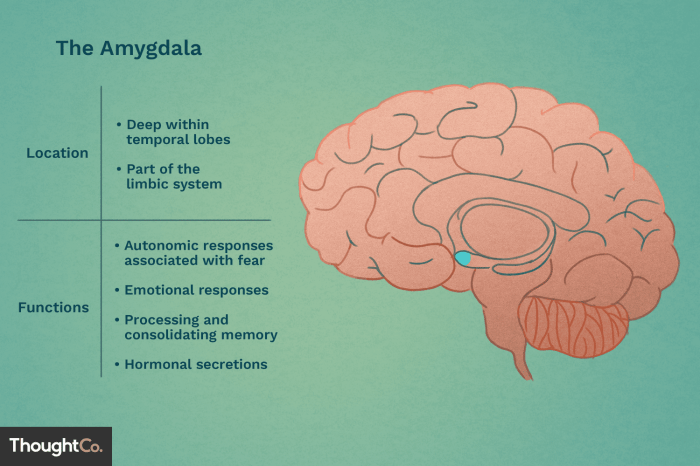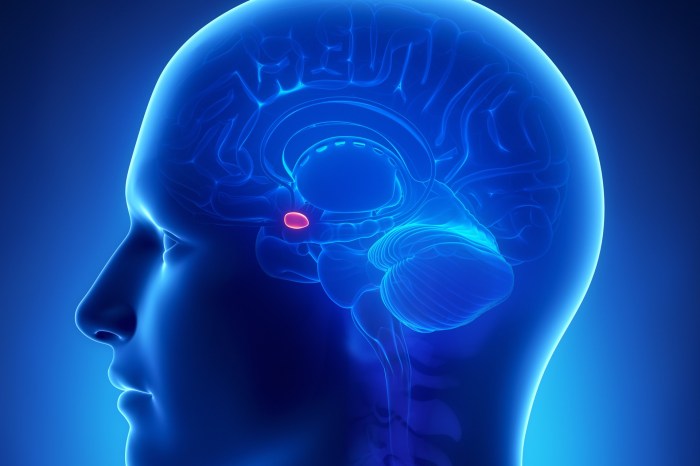Unveiling the brain parts involved in fight or flight crossword, this comprehensive guide embarks on an intriguing journey into the neural mechanisms underlying our primal survival instincts. By delving into the intricate interplay of the amygdala, hypothalamus, hippocampus, prefrontal cortex, and brainstem, we unravel the fascinating complexities of how our brains orchestrate our responses to perceived threats.
From the amygdala’s pivotal role in fear and aggression to the prefrontal cortex’s crucial function in decision-making and impulse control, each brain region plays a distinct and indispensable part in shaping our fight-or-flight reactions. This exploration not only enhances our understanding of these neural processes but also provides valuable insights into the adaptive and protective nature of our survival mechanisms.
Brain Parts Involved in Fight or Flight Response: Brain Parts Involved In Fight Or Flight Crossword

The fight or flight response is a physiological reaction that occurs in response to a perceived threat. It involves a complex interplay of various brain regions, each playing a distinct role in orchestrating the body’s response.
Amygdala
The amygdala is a small, almond-shaped structure located in the medial temporal lobes. It is the primary brain region involved in processing fear and aggression. During the fight or flight response, the amygdala is activated and triggers the release of stress hormones, such as cortisol and adrenaline, which prepare the body for action.
When a threat is perceived, the amygdala sends signals to the hypothalamus and brainstem, which activate the sympathetic nervous system and trigger the release of hormones. The amygdala also influences fear and aggression by modulating activity in other brain regions, such as the hippocampus and prefrontal cortex.
Hypothalamus, Brain parts involved in fight or flight crossword
The hypothalamus is a small region located at the base of the brain. It plays a crucial role in regulating the fight or flight response by releasing hormones that control various bodily functions.
The paraventricular nucleus and the supraoptic nucleus in the hypothalamus release hormones that stimulate the release of adrenaline from the adrenal glands. This hormone increases heart rate, blood pressure, and respiration, preparing the body for physical action.
The hypothalamus also regulates the autonomic nervous system, which controls involuntary bodily functions such as digestion, heart rate, and breathing. During the fight or flight response, the hypothalamus activates the sympathetic nervous system, which increases heart rate and breathing, while inhibiting the parasympathetic nervous system, which controls relaxation and digestion.
Hippocampus
The hippocampus is a brain region located in the medial temporal lobes. It is involved in memory consolidation and fear conditioning.
During the fight or flight response, the hippocampus interacts with the amygdala and hypothalamus to modulate the fear response. The hippocampus helps to consolidate memories of threatening events, which can trigger the fight or flight response in the future.
Prefrontal Cortex
The prefrontal cortex is a brain region located behind the forehead. It plays a crucial role in regulating the fight or flight response by inhibiting impulsive behaviors and promoting rational decision-making.
The prefrontal cortex interacts with the amygdala and hypothalamus to modulate the fear response. It helps to inhibit impulsive behaviors and promotes rational decision-making by evaluating the threat and considering the consequences of different actions.
Brainstem
The brainstem is the lowest part of the brain. It controls basic bodily functions such as heart rate, breathing, and blood pressure.
During the fight or flight response, the brainstem activates the sympathetic nervous system, which increases heart rate and breathing, and inhibits the parasympathetic nervous system, which controls relaxation and digestion. The medulla, pons, and midbrain in the brainstem play a crucial role in regulating these autonomic functions.
Commonly Asked Questions
What is the primary function of the amygdala in the fight-or-flight response?
The amygdala acts as the brain’s primary fear center, rapidly detecting potential threats and triggering appropriate defensive responses.
How does the hypothalamus contribute to the fight-or-flight response?
The hypothalamus orchestrates the release of hormones that prepare the body for action, such as adrenaline and cortisol, and activates the autonomic nervous system to regulate heart rate, breathing, and blood pressure.
What role does the hippocampus play in the fight-or-flight response?
The hippocampus interacts with the amygdala and hypothalamus, helping to process and consolidate memories related to fear and danger, influencing future responses to similar situations.


